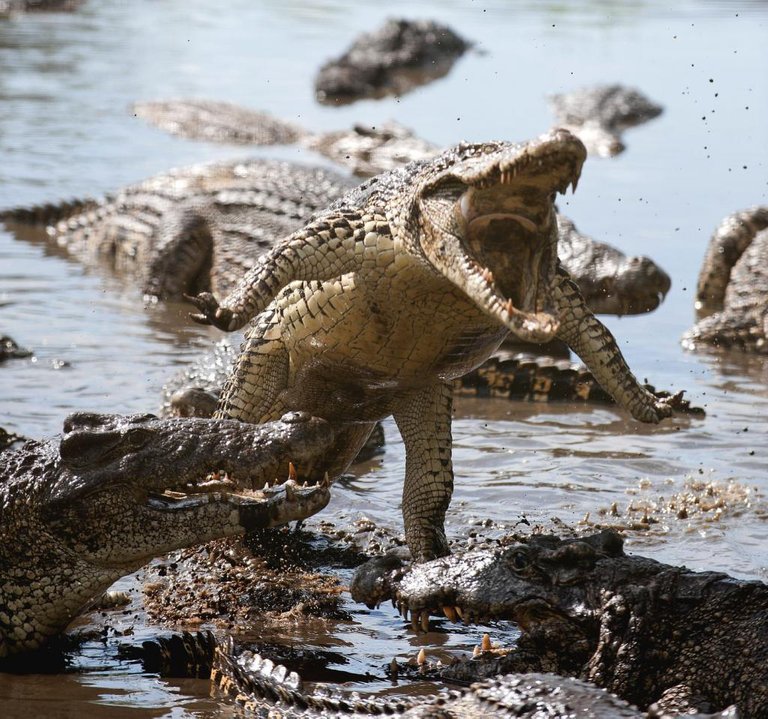
The Cuban crocodile (Crocodylus rhombifer), also known as the Pearly crocodile, is a medium-sized crocodile that grows to about 10 feet, 3 meters, long and weighs around 180 pounds, 80 kilograms. This critically endangered crocodilian's range previously included the Bahamas and Cayman islands, however, now their entire natural range is encompassed by the Zapata Swamp in Cuba, the smallest known range of any crocodile at just 200 square miles, 500 square kilometers.
The Cuba crocodile has powerful legs that not only make it a strong swimmer but, by using its tail for balance, is even capable of leaping straight out of the water in order to grab prey. Its favorite meals include, tortoises, fish, and birds. They also exhibit interesting pack behaviors when hunting, surrounding larger prey and working together to bring it down while generally choosing to bask after a successful hunt alone. The crocodiles have been observed forming hierarchical relationships within groups based on a number of dominance factors, such as size and aggression.
There remains some debate, however, most estimates available place the lifespan of the species at up to 75 years in captivity. In the wild though, the estimates are much lower at roughly 20 years due to a number of factors, most prominently poaching. Further stress is placed on the population by interbreeding with American crocodiles.
Image: Sergey Uryadnikov | ShutterstockRead more: http://rsci.nl/8l9
Read more: http://rsci.nl/uvo
Can you imagine being surrounded by an organized herd of hungry crocs? That is crazy!
The very thought gives me Jurassic Park flashbacks!